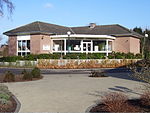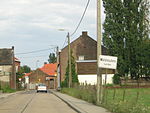Battle of Elixheim
1705 in FranceBattles in FlandersBattles involving EnglandBattles involving FranceBattles involving the Dutch Republic ... and 2 more
Battles of the War of the Spanish SuccessionConflicts in 1705
The Battle of Elixheim, 18 July 1705, also known as the Passage of the Lines of Brabant was a battle of the War of the Spanish Succession. The Duke of Marlborough successfully broke through the French Lines of Brabant, an arc of defensive fieldworks stretching in a seventy-mile arc from Antwerp to Namur. Although he was unable to bring about a decisive battle, the breaking and subsequent razing of the lines would prove critical to the allied victory at Ramillies the next year.
Excerpt from the Wikipedia article Battle of Elixheim (License: CC BY-SA 3.0, Authors).Battle of Elixheim
Brouwerijstraat,
Geographical coordinates (GPS) Address Nearby Places Show on map
Geographical coordinates (GPS)
| Latitude | Longitude |
|---|---|
| N 50.7842 ° | E 5.0097 ° |
Address
P.C. Martelik
Brouwerijstraat 28A
3400
Flemish Brabant, Belgium
Open on Google Maps










